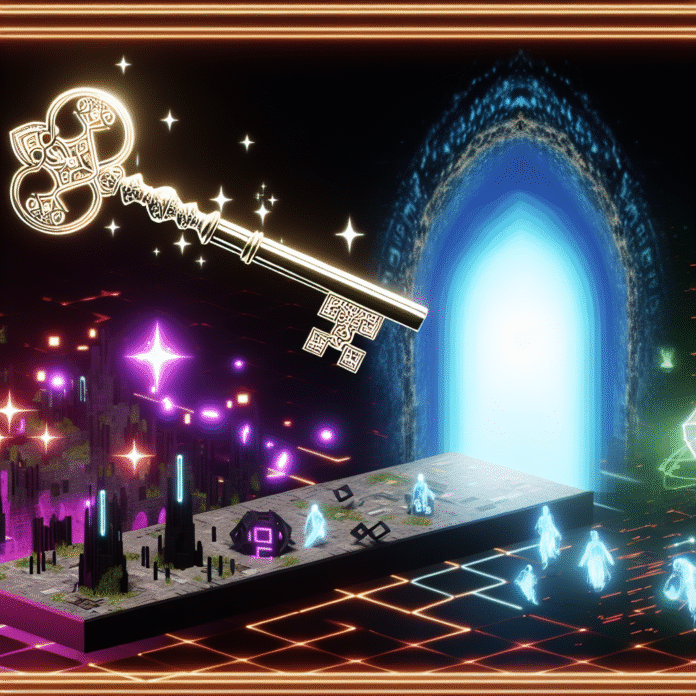Unlocking New Realms: The Future of AAA Game Worlds
Imagine stepping into a game world so immersive that you almost forget you’re interacting with a digital construct. In 2023, this isn’t just a bold claim but rather the future being carved out by the relentless march of technology in the gaming industry. Gone are the days when we merely “played” games; today, we “experience” entire universes rich with narrative, mechanics, and the thrill of exploration. For hardcore gamers, casual players, and tech enthusiasts alike, the evolution of AAA game worlds is nothing short of revolutionary.
A Dive into AAA Game Evolution
The term AAA games refers to titles backed by large studios with a significant budget and a high level of production value. Think of franchises like “The Legend of Zelda,” “Call of Duty,” or “Final Fantasy”. These games have set a gold standard that keeps raising the bar for what we expect in terms of graphics, storytelling, and gameplay. As we venture deeper into this decade, it’s clear the gaming industry is poised for another leap forward.
The Challenge of Expansive Worlds
Even as AAA games have continued to evolve, they face a common hurdle: creating worlds that feel alive and engaging. While graphics have improved exponentially, the content inside these vast spaces sometimes falls short. Ever wandered around a beautifully crafted landscape only to find that the NPCs (non-player characters) feel lifeless or that the side quests are repetitive? It’s frustrating, right? To maintain immersion, developers need a balance of stunning visuals and meaningful interactions.
Emerging Technologies Changing the Landscape
Enter technologies such as Artificial Intelligence (AI), cloud gaming, and virtual reality (VR). These innovations are set to transform how game developers create worlds. Here’s how:
- Artificial Intelligence: AI can go beyond just enemy behavior. Imagine a game where NPCs actually learn player habits and respond in real-time. For example, if you tend to sneak around a lot, an NPC might start setting traps in areas they expect you to explore.
- Cloud Gaming: With services like Google Stadia and NVIDIA GeForce NOW, players can access high-quality games on less powerful hardware. This means developers can create larger worlds with more elements, as the computing power is managed remotely rather than being constrained by a player’s console.
- Virtual and Augmented Reality: While VR had its hiccups, it’s making a comeback with stronger hardware and creative titles. VR can create an immersive experience that immerses players in these expansive worlds, making them feel like they belong rather than just observing.
Case Studies: Worlds of Tomorrow
Several titles have already begun to push the envelope and show us what the future could hold.
“Elden Ring,” for instance, has received critical acclaim not just for its gothic aesthetics, but for its open-world design brimming with lore and hidden depths. Players can get lost in its environments, discovering secrets and storylines that intertwine in a rich tapestry. This is what happens when developers allow the sense of exploration and discovery to drive their design choices.
Another example is “Cyberpunk 2077.” Despite its rocky launch, the game boasts a sprawling city full of characters, choices, and experiences. Numerous updates have enhanced its world even further, illustrating how ongoing support and community feedback can refine and enrich the game world over time.
Beyond the Screen: New Forms of Engagement
Imagine a world where the game doesn’t just end when you put down the controller. The future of AAA games might involve an integrated ecosystem of experiences. Think about how movies have transitioned from simple viewings to entire franchises where fans actively participate through merchandising, online forums, and fan experiences. This broader context can exist within gaming too.
Consider a game like “Fortnite,” which has integrated live events and concert experiences. The whole world feels dynamic, with not just gameplay but various forms of entertainment woven together. Players become not just gamers but active participants in an evolving narrative.
The Future: A Player-Centric Approach
As we move forward, the emphasis on community and interactivity will likely dictate how AAA titles evolve. Imagine a game where players can create quests and share them with the community, making worlds infinitely expandable. An example of this is the “Dreams” platform, where users can create their game experiences for others to play.
This player-centric model fosters creativity, driving engagement and making every player a potential contributor to the game universe rather than just a consumer. It shifts the paradigm, empowering communities to shape and flesh out game worlds in real-time.
Conclusion: Shaping Tomorrow Together
The future of AAA games is not just about technological advancements; it’s equally about community, creativity, and genuinely immersive experiences. As developers harness these new technologies and methods to lace deeper narratives with engaging gameplay, the worlds we explore will feel more alive than ever. The journey to creating these dynamic spaces is only just beginning, and for gamers, that’s an exciting promise to embrace.
So, gear up! The next time you dive into a game, you might just find yourself in a living, breathing universe that feels like a second home— only this time, it’s not just a game; it’s your new adventure.

